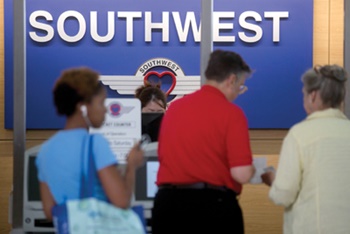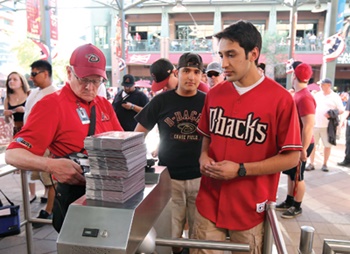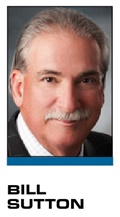The inspiration for this column comes from a personal experience unrelated to sports and entertainment. But the experience not only carries a lesson for sports and entertainment, but also could potentially affect market forces and opportunities that lead to courses of action that leaders consider every day before making a decision.
I have many brand preferences, but only a few brand loyalties. I enjoy both Marriott and Hilton properties and am happy to drink Pepsi or Coke — waiting for Coca-Cola Life to see if that pushes me one way or another. I usually purchase Nike but have dabbled in other brands. My brand loyalty, where I would say it is next to impossible to move me, includes brands such as American Express, Chase Bank, Apple, DirecTV, BMW and, most recently, Southwest Airlines.
For more than 20 years, I was very loyal to an airline that originated in my hometown of Pittsburgh. I flew this airline almost exclusively, even when I worked at the NBA and it would have been easier to fly something else. My loyalty began deteriorating when the airline changed many of its routes, eliminating many direct flights to cities where I traveled frequently. The deterioration continued when it began charging for bags and most recently when it implemented variable pricing policies for seat selection. In addition to my fare to Phoenix, I paid $25 to check my luggage and $69 to sit in the exit row, even though it appears that out of the 10 exit row seats there were only two of us capable of opening the door in case of an emergency.
 |
Recently, I received an email from Southwest, which I had begun flying more and more, informing me that I had achieved Companion Status. I didn’t know what that meant so I followed the instructions in the email and learned that I could designate someone as my traveling companion and that individual (my wife, Sharon) could travel with me at no cost through 2015. Needless to say, I was pleasantly surprised, especially considering the fact that Southwest
 |
Following Southwest’s example of how to treat frequent customers could help sports and entertainment properties build more loyal fan bases.
Photo by: GETTY IMAGES (2)
|
knows that she travels frequently with me based upon my past purchases and her frequent flier activity. Thus, I will no longer be flying any other airline unless I have no choice based upon route or client preference. I will do everything in my power to fly Southwest and maintain this generous and considerate benefit I have been extended.
It should be clear where I am going with this, but let me spell it out. Southwest could have followed the practices of the other airlines and possibly profited significantly from all of the additional fees, but it chose not to. It chose not to exploit the customer but instead to build a long-term, mutually beneficial relationship. The relationship means I don’t care about lining up or to ensure that I check in 24 hours in advance to secure my seat selection, criticisms leveled at Southwest.
My Pirates season tickets for 2015 come with membership benefits based upon my tenure and spending level. I am offered access and assets that are new this year. I renewed not because of the benefits, but because it makes me feel good to think the Pirates, whose attendance has been climbing and where demand has increased significantly, think that my lifetime value outweighs any short-term savings or profiteering.
The Tampa Bay Lightning invests heavily in the community, providing a $50,000 donation to a nonprofit organization at every home game. The team made a real impact by continuing this practice during the NHL lockout a few years ago and meeting with the community organizations and making the awards even for games scheduled and not played. The Lightning also provides season-ticket members with team jerseys containing a radio frequency identification chip that provides discounts at the concession stands. It’s common to think that there’s no loyalty in Florida because everyone is from somewhere else and hockey is a northern sport. Not if you are a Lightning fan.
A recent trip to Levi’s Stadium demonstrated to me how an app can affect customer service as well as amenities. If you have the Levi’s Stadium app, you are eligible for in-seat food service regardless of your seating location. The 49ers hire 500 runners on game days to deliver food. They also employ NinerNerds to assist people with technology upon arrival. The app also capitalizes on geo-targeting to offer seat upgrades or to pre-order food while you are en route to the game.
Regardless of the business we are in or the size of that business, we have the opportunity to build, enhance and expand relationships with fans and customers. We just need to keep in mind the following facts when we are considering pricing policies and structuring benefits:
1. The number of entertainment options and opportunities is growing every day. I have a choice with regard to whether I come back and, often, how I am treated outweighs how I feel about the product.
2. If you want to charge me high prices for food and beverage when I visit your venue, I can choose to eat before or after the event at home or at a restaurant that is more reasonably priced. Perhaps I would be open to purchasing food and beverage more often if we had a relationship rather than the operative thought, “You can’t leave so what choice do you have?”
3. Don’t be afraid to fly solo. Being different and not following the herd can pay benefits. Just ask Southwest.
4. Think lifetime value and treat every customer based upon the value of the lifetime customer each of them could become.
5. Use your analytics team to explore alternatives and project the ROI for each possible decision.
Bill Sutton (wsutton1@usf.edu) is the founding director of the sport and entertainment business management MBA at the University of South Florida and principal of Bill Sutton & Associates. Follow him on Twitter @Sutton_ImpactU.






